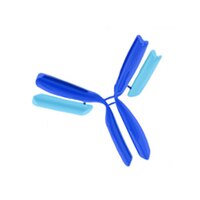610200 Sigma-AldrichAnti-Tie1, C-Terminal Rabbit pAb
This Anti-Tie1, C-Terminal Rabbit pAb is validated for use in ELISA, Immunoblotting, Immunofluorescence, Immunohistochemistry for the detection of Tie1, C-Terminal.
More>> This Anti-Tie1, C-Terminal Rabbit pAb is validated for use in ELISA, Immunoblotting, Immunofluorescence, Immunohistochemistry for the detection of Tie1, C-Terminal. Less<<Sinonimi: Anti-Tunica Internal Endothelial Cell Kinase, Anti-Tyrosine Protein Kinase Receptor
Prodotti consigliati
Panoramica
| Replacement Information |
|---|
Tabella delle specifiche principali
| Species Reactivity | Host | Antibody Type |
|---|---|---|
| B, H, M, R | Rb | Polyclonal Antibody |
Prezzi e disponibilità
| Numero di catalogo | Disponibilità | Confezionamento | Qtà/conf | Prezzo | Quantità | |
|---|---|---|---|---|---|---|
| 610200-50UG |
|
Fiala di plastica | 50 μg |
|
— |
| Product Information | |
|---|---|
| Form | Liquid |
| Formulation | In PBS, 0.1% BSA, pH 7.4. |
| Preservative | None |
| Quality Level | MQ100 |
| Physicochemical Information |
|---|
| Dimensions |
|---|
| Materials Information |
|---|
| Toxicological Information |
|---|
| Safety Information according to GHS |
|---|
| Safety Information |
|---|
| Product Usage Statements |
|---|
| Packaging Information |
|---|
| Transport Information |
|---|
| Supplemental Information |
|---|
| Specifications |
|---|
| Global Trade Item Number | |
|---|---|
| Numero di catalogo | GTIN |
| 610200-50UG | 04055977264180 |
Documentation
Anti-Tie1, C-Terminal Rabbit pAb MSDS
| Titolo |
|---|
Anti-Tie1, C-Terminal Rabbit pAb Certificati d'Analisi
| Titolo | Numero di lotto |
|---|---|
| 610200 |
Riferimenti bibliografici
| Panoramica delle referenze |
|---|
| Korhoene, J., et al. 1995. Blood 86, 1828. Iwama, A., et al. 1993. Biochem. Biophys. Res. Commun. 195, 301. Sato, T.N., et al. 1993. Proc. Natl. Acad. Sci. USA 90, 12056. deVries, C., et al. 1992. Science 255, 989. Partenen, J., et al. 1992. Mol. Cell Biol. 12, 1698. |







